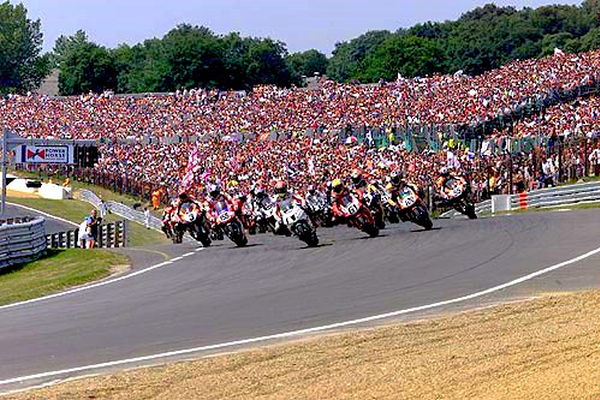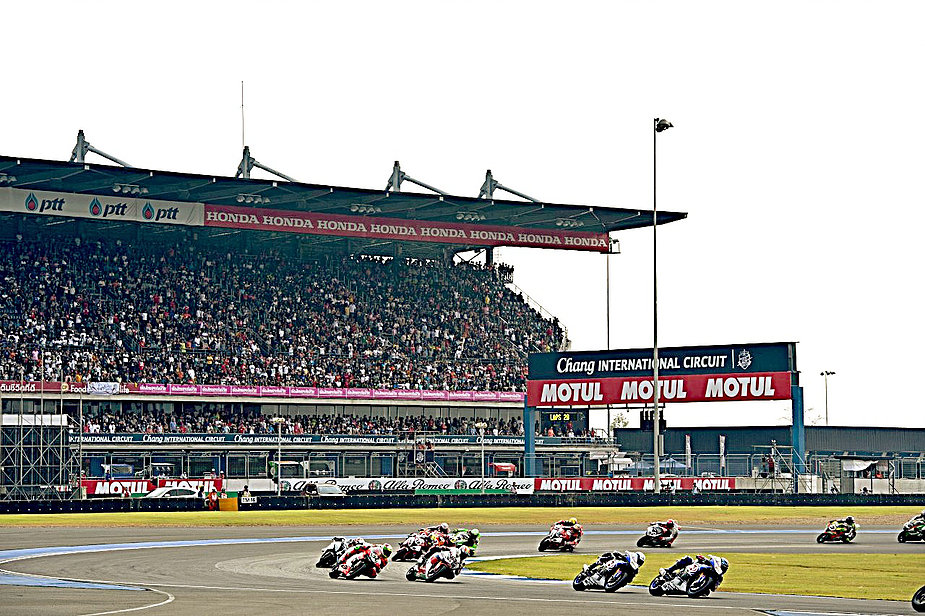
With its Porsche 991 GT3 R, German team Herberth Motorsport has won the Hankook 24H DUBAI. In the twelfth running of the event, drivers Daniel Allemann, Ralf Bohn, Robert Renauer, Alfred Renauer and Brendon Hartley racked up a total of 578 laps of the 5.399 kilometres long Dubai Autodrome. “It was an awesome experience! My first race with a GT car, my first race in a 911, and my first victory in a 24-hour race. A great car, great team-mates and a great performance,” Hartley commented. “We have had some good success in the 24H SERIES powered by Hankook last year, but this certainly is our biggest success so far,” said Robert Renauer, who drove the winning car across the finish line. For Porsche, it was the fifth victory in the Hankook 24H DUBAI after earlier wins in 2008, 2009, 2010 and 2014. This time, it was even a 1-2 for the German manufacturer as the Manthey Racing Porsche (#12, Otto Klohs/Sven Müller/Matteo Cairoli/Jochen Krumbach) finished second, two laps down on the winning entry. A three times’ Dubai race winner, the Black Falcon team saw its Mercedes-AMG GT3 (#3, Abdulaziz Al Faisal/Hubert Haupt/Yelmer Buurman/Michal Broniszewski/Maro Engel) finish third. Buurman posted the fastest lap time of the race.

Between them, the Manthey and Herberth Motorsport Porsche teams spent more than three quarters of the race in the lead of the field. Driving the Manthey car around 5.30 hrs, Otto Klohs became involved in a collision with another vehicle, after which some repair on the left front side of the Porsche was required. That gave the Herberth team a slight advantage to which it held on for the final eight hours of the race. In total, the Herberth Motorsport Porsche led the field for 380 laps. The two Black Falcon Mercedes-AMG GT3 both were in contention for a podium finish, running in the top four until well after sunrise, but then local hero Khaled Al Qubaisi, driving the #2 car, spun and collected the #963 GRT Grasser Racing Team Lamborghini (Mirko Bortolotti/Christian Engelhart/Rik Breukers/Rolf Ineichen/Mark Ineichen). Both cars retired after the accident. Earlier in the race, the Austrian team’s #964 car (Mirko Bortolotti/Christian Engelhart/Ezequiel Companc/Rolf Ineichen/Adrian Amstutz) had already retired following a collision while the HB Racing Lamborghini (#7, Herbert Handlos/Norbert Siedler/Sam Tordoff/Florian Spengler/Andrea Amici) was out early in the race following a burst tyre that damaged the fuel line and led to a fire. Polish ex-Formula 1 racer Robert Kubica didn’t make it to the finish either in his first-ever 24h race as the car on which he was entered, the Forch Racing powered by Olimp (#29, Robert Lukas/Marcin Jedlinski/Wolf Henzler/Santiago Creel/Robert Kubica) retired with technical issues.

Reigning 24H SERIES teams’ champions, Hofor Racing, won the A6-Am class on the first competitive outing with its new Mercedes-AMG GT3 (#1, Michael Kroll/Chantal Kroll/Roland Eggimann/Kenneth Heyer/Christiaan Frankenhout) after a largely trouble-free run. GP Extreme finished second in class with its Renault RS01 FGT3 (#27, Frédéric Fatien/Tiziano Carugati/Nicky Pastorelli/Stuart Hall), followed by Car Collection Motorsport’s Audi R8 LMS (#34, Dr. Johannes Kirchhoff/Gustav Edelhoff/Max Edelhoff/Elmar Grimm/Ingo Vogler).
Lamborghini Huracán Super Trofeo cars scored a 1-2 in the SPX class with victory for GDL Racing Middle East (#87, Franck Pelle/Rory Penttinen/Vic Rice/Pierre Ehret), followed by Leipert Motorsport (#10, Oliver Webb/Jake Rattenbury/Jean-Charles Perrin/Harald Schlotter), a fine performance by the team that started from the back of the grid due to a chassis change following an incident in practice. The Fach Auto Tech Porsche (#51, Thomas Fleischer/Peter Joos/Marcel Wagner/Heinz Bruder/Martin Ragginger) came third in class.

The Black Falcon Team TMD Friction won the Porsche 991 Cup class with its #68 car (Saud Al Faisal/Saeed Al Mouri/Anders Fjordbach/Alexander Toril), from Prosport Performance (#85, Charles Putman/Charles Espenlaub/Joe Foster/Andy Pilgrim) and race:pro motorsport (#63, Stanislav Minsky/Murad Sultanov/Klaus Bachler/Carlos Rivas/Mark Wallenwein).
The SP2 class saw the Bovi Motorsport Brokernet Silversting (#207, Wolfgang Kaufmann/Kalman Bodis/Jaap van Lagen/Heino Bo Fredriksen) come out on top from the Reiter Engineering KTM X-BPW (#247, Anthony Mantella/Dore Chaponick jr./Brett Sandberg/Benjamin Mazatis) and the VDS Racing Adventures MARC Focus V8 (#58, Raphaël van der Straten/Joël Vanloocke/Grégory Paisse/Pierre Dupont/José Close).
British sports car brand Ginetta scored a 1-2 in the SP3-GT4 class. Optimum Motorsport (#231, Stewart Linn/Ade Barwick/Dan O’Brien/William More) won by a comfortable margin from Century Motorsport (#229, Nathan Freke/Aiden Moffat/Jack Mitchell/Ben Green). The GDL Racing Team Asia Porsche Cayman GT4 Clubsport MR (#267, Jonathan Hui/Frank Yu/Antares Au/Kevin Tse) came third.

Making its competition debut in Dubai this weekend, the Audi RS3 LMS scored a class win in the TCR category with the Cadspeed Racing with Atech entry (#108, James Kaye/Julian Griffin/Erik Holstein/Finlay Hutchison). A long-time class leader, the Modena Motorsport SEAT Leon TCR (#216, Wayne Shen/John Shen/Francis Tjia/Mathias Beche) came second, with the Zest Racecar Engineering SEAT (#105, Philippe Ulivieri/Gosia Rdest/John Allen/JT Coupal/John Weisberg) third.
A3 touring class honours went to the Team Altran Peugeot with the victory for the #308 Peugeot 208 GTi (Guillaume Roman/Thierry Blaise/Kim Holmgaard/Michael Carlsen) and second for the #908 sister car (Yusif Bassil/Thierry Boyer/Gonzalo Martin de Andres/Loïc Dupont). The PB Racing Lotus Elise Cup (#133, Stefano D’Aste/Stefano Pasotti/Lorenzo Pegoraro/Immanuel Vinke/Michele Bartyan) came third.
German team Sorg Rennsport scored a 1-2 in the CUP1 class with its #151 BMW M235i Racing Cup Car (Stephan Epp/Christian Andreas Franz/Michael Hollerweger/Heiko Eichenberg/Oskar Sandberg) in first and the #152 sister car (Ahmed Al Melaihi/Jesus Diez/José Manuel de los Milagros/George Richardson/Shawn Peh) in second, followed by the Bonk Motorsport entry (#146, Hermann Bock/Rainer Partl/Max Partl).
Danish Team Eva Solo/K-Rejser won the A2 class with its Peugeot RCZ (#171, Jacob Kristensen/Jan Engelbrecht/Thomas Sørensen/Jens Mølgaard/Henrik Sørensen) from the Team Cooksport Renault Clio Cup IV (#172, Alex Sedgwick/Shayne Deegan/Oliver Cook/Jonathan Maybin/Josh Cook) and the Team Sally Racing 1 Renault Clio Cup III (#52, Martin Sally Pedersen/Peter Obel/Steffan Jusjong/Sune Marcussen/Mads Christensen).
24H SERIES powered by Hankook action continues with the Hankook 12H MUGELLO (17-18 March) while competitors in the 24H TCE SERIES powered by Hankook will get their season underway with the Hankook 24H SILVERSTONE (31 March-2 April). Following the great success of the Hankook 3x3H DUBAI prototype races, the inaugural 24H PROTO SERIES powered by Hankook season starts with the Hankook 12H MAGNY-COURS (21-22 April). Further information can be found at www.24hseries.com.
CLASS PODIUMS

A6-PRO (mainly GT3 cars)
1st – #911 Herberth Motorsport – Porsche 911 GT3 R
Allemann, Bohn, Renauer, Hartley
2nd – #12 Manthey Racing – Porsche 911 GT3 R
Klohs, Muller, Cairoli, Krumbach
3rd – #3 Black Falcon – Mercedes AMG GT3
Al Faisal, Haupt, Buurman, Broniszewski, Engel
A6-Am (mainly GT3 cars)
1st – #1 Hofor Racing – Mercedes AMG GT3
Kroll, Kroll, Eggimann, Heyer, Frankenhout
2nd – #27 GP Extreme – Renault RS01 FGT3
Fatien, Carugati, Pastorelli, Hall
3rd – #34 Car Collection Motorsport – Audi R8 LMS
Dr. Kirchhoff, Edelhoff, Edelhoff, Grimm, Vogler
SPX – Special Cars (mainly GT cars and Silhouette cars)
1st – #87 GDL Racing Middle East – Lamborghini Huracan Super Trofeo
Pelle, Penttinen, Rice, Ehret
2nd – #10 Leipert Motorsport – Lamborghini Huracan Super Trofeo
Webb, Rattenbury, Perrin, Schlotter
3rd – #51 FACH AUTO TECH – Porsche 911 Cup MR
Fleischer, Joos, Wagner, Bruder, Ragginger
991 – Porsche 991 Cup Cars (models 2014, 2015)
1st – #68 Black Falcon Team TMD Friction – Porsche 991 Cup
Al Faisal, Al Mouri, Fjordbach, Toril
2nd – #85 PROsport Performance – Porsche 991 Cup
Putman, Espenlaub, Foster, Pilgrm
3rd – #63 race:pro motorsport – Porsche 991 Cup
Minsky, Sultanov, Bachler, Rivas, Wallenwein
SP2 – Special Cars (mainly GT cars and Silhouette cars)
1st – #207 Bovi Motorsport – Brokemet Silver Sting
Kaufmann, Bodis, van Lagen, Bo Frederiksen
2nd – #247 Reiter Engineering – KTM X-Bow (SP2)
Mantella, Chaponick Jr, Sandberg, Mazatis
3rd – #58 VDS Racing Adventures – MARC Focus V8
vander Straten, Vanloocke, Paisse, Dupont, Close
SP3 – Special Cars (mainly GT4 cars)
1st – #231 Optimum Motorsport – Ginetta G55 GT4
Linn, Barwick, O’Brien, Moore
2nd – #229 Century Motorsport – Ginetta G55 GT4
Freke, Moffat, Mitchell, Green
3rd – #267 GDL Racing Team Asia – Porsche Cayman GT4 Clubsport MR
Hui, Yu, Au, Tse
TCR – TCR cars Petrol Touring Cars 2000cc Supercharged
1st – #108 Cadspeed Racing with A tech – Audi RS3 LMS TCR
Kaye, Griffin, Holstein, Hutchison
2nd – #216 Modena Motorsports – Seat Leon TCR V2 SEQ
Shen, Shen, Tjia, Beche
3rd – #105 Zest Racecar Engineering – Seat Leon TCR V2 DSG
Ulivieri, Rdest, Allen, Coupal, Weisberg
A3 – Touring Cars 2000cc up to 3500cc & Supercharged 1650cc up to 2000cc
1st – #308 Team Altran Peugeot – Peugeot 208 GTi
Roman, Blaise, Holmgaard, Carlsen
2nd – #908 Team Altran Peugeot – Peugeot 208 GTi
Bassil, Boyer, de Andres, Dupont
3rd – #133 PB Racing – Lotus Elise Cup PB-R
D’Aste, Pasotti, Pegoraro, Vinke, Bartyan
CUP1 – BMW M235i Racing Cup 3000cc Twin Turbo
1st – #151 Sorg Rennsport – BMW M235i Racing Cup
Epp, Andreas Franz, Hollerweger, Eichenberg, Sandberg
2nd – #152 Sorg Rennsport – BMW M235i Racing Cup
Al Melaihi, Diez, de los Milagros, Richards, Peh
3rd – #146 Bonk Motorsport – BMW M235i Racing Cup
Bock, Partl, Partl
A2 – Petrol Touring Cars up to 2000cc & Supercharged up to 1650cc
1st – #171 Team Eva Solo/K-Rejser – Peugeot RCZ
Kristensen, Engelbrecht, Sorensen, Molgaard, Sorensen
2nd – #172 Team Cooksport – Renault Clio Cup IV
Sedgwick, Deegan, Cook, Maybin, Cook
3rd – #52 Team Sally Racing 1 – Renault Clio Cup III
Sally Pedersen, Obel, Jusjong, Marcussen, Christensen
(c) photos courtesy of 24H Series
Neil Simmons
Twitter: @world_racing












 On the second lap of the race, Schlesser’s Honda slid wide at the Six Freres curve, just before the tight Virage Du Noveau Monde right hander. He crashed into a bank close to the circuit and the car erupted in flames. It was laden with fifty-eight laps worth of fuel and the magnesium bodywork just ignited. Schlesser stood no chance of survival.
On the second lap of the race, Schlesser’s Honda slid wide at the Six Freres curve, just before the tight Virage Du Noveau Monde right hander. He crashed into a bank close to the circuit and the car erupted in flames. It was laden with fifty-eight laps worth of fuel and the magnesium bodywork just ignited. Schlesser stood no chance of survival.










